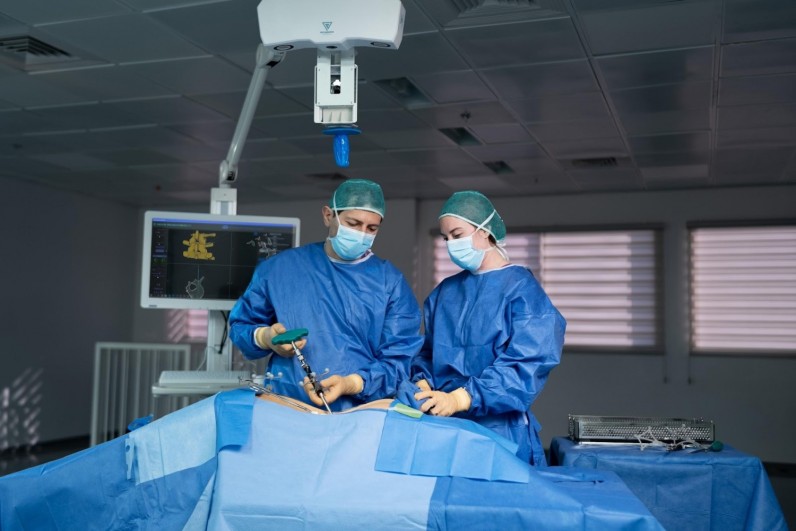
Select your radiation dose: Low, Medium, or High. How about none? Vast improvements have been made in spinal navigation since its inception over 30 years ago, but one widely accepted fact remains the same - intraoperative radiation is required. Until today. Path-Keeper's FDA-approved, patented technology is changing the game.
For years, it has been an accepted norm that navigating the intricate pathways of the human body requires the extensive use of intraoperative radiation, particularly in X-rays. These cutting-edge tools, designed to help heal us, are inadvertently exposing us to hidden dangers. According to Harvard Health, "The proportion of total radiation exposure that comes from medical sources has grown from 15% in the early 1980s to 50% today." - a number that is only continuing to rise.
Intraoperative radiation is used in more than 90% of spine surgeries performed today, which are still done freehand. With this final roadblock eliminated, an entirely new market will emerge, making this not just a revolutionary leap forward but also a significant sales opportunity.
Imagine a world where surgical precision meets safety head-on, where the very instruments used to mend us no longer put us at risk. PathKeeper, a 3D optical surgical navigation system, promises a brighter, radiation-free future for patients and the dedicated medical professionals who care for them. The era of surgical navigation as we know it is about to change forever.
Despite incremental software improvements and enhanced user interfaces, the reliance on radiation in surgical navigation has largely remained unchanged. For every CT scan, patients are exposed to radiation equivalent to approximately 200 chest X-rays - this presents an alarming amount of exposure in patients having to go through multiple scans during a single procedure. For every additional scan, the risk of certain cancers may increase significantly.
This overexposure to radiation doesn't just affect the patient; it is also a growing concern for medical staff performing these tests and the surgeons relying on them. Even though they take precautions, such as wearing lead vests, they are not immune to the risks posed by prolonged exposure. So, even though these scans are instrumental in diagnosing, monitoring, and guiding medical procedures, their benefits are overshadowed by the potential of a cancer diagnosis in the near future.
Recognizing the limitations and risks associated with existing surgical navigation technologies, PathKeeper emerges as a game-changing solution that addresses these concerns head-on. It combines the precision of high-resolution 3D optical camera technology with the power of artificial intelligence (AI) and machine learning. The result is real-time, high-resolution imaging that helps surgeons navigate through complex anatomical structures with unparalleled accuracy.
One of the critical features that sets PathKeeper apart from the competition is its unparalleled accuracy and precision. In a field where anatomical structures can shift during surgery, having real-time guidance for surgeons is not just beneficial; it's essential. Traditional systems often struggle to maintain accuracy in such dynamic situations, leading to time-consuming rescans that can take 20-30 minutes. This not only delays procedures but also exposes patients to unnecessary radiation. PathKeeper eliminates this problem with quick, 30-second re-registration, ensuring that surgeons have the precise information they need exactly when they need it.
When asked about PathKeeper's standout features and how they are different from traditional systems that rely heavily on ionizing radiation, the company's CEO, Erez Lampert, said, "PathKeeper eliminates the need for such harmful practices. Instead, it uses optical camera accuracy directly on the patient's anatomy, combined with AI-driven insights from preoperative CT scans. This innovative approach not only enhances safety but also provides greater precision during surgical procedures."
With a technology that addresses the pressing needs of spine surgery and offers a competitive edge over existing solutions, there is a clear path to market adoption and growth. The spine surgery market is substantial, and the demand for safer, more precise procedures is on the rise. Investors who recognize the unique value proposition of PathKeeper are not only investing in revolutionary technology but also positioning themselves at the forefront of a rapidly evolving industry. To learn more, visit path-keeper.com







Join the Conversation